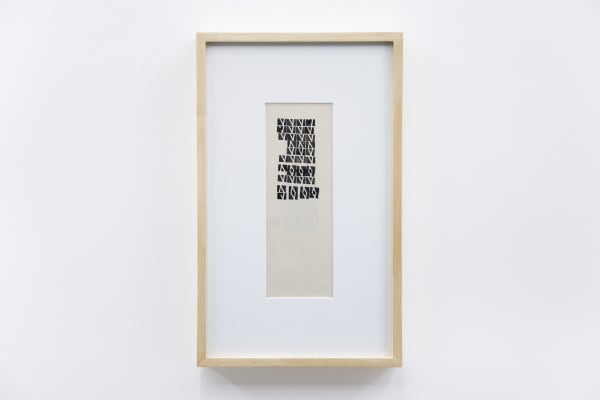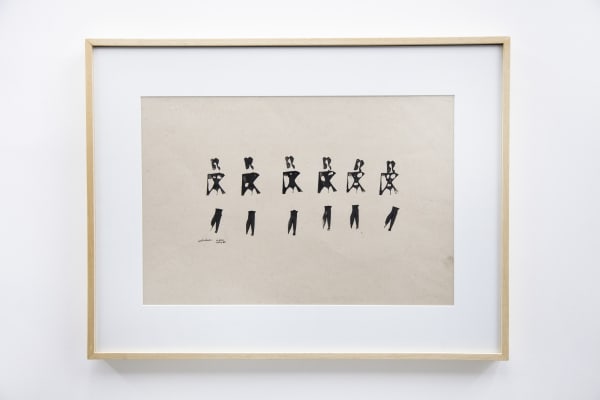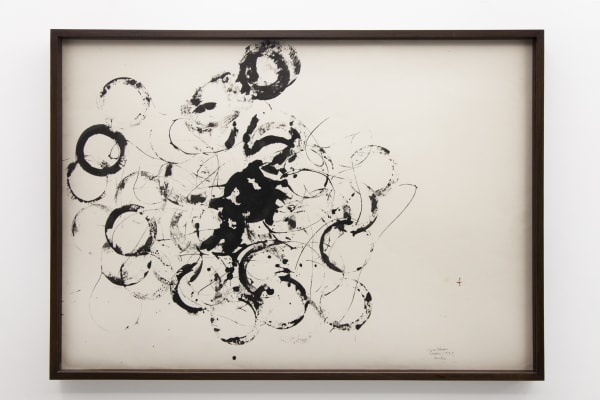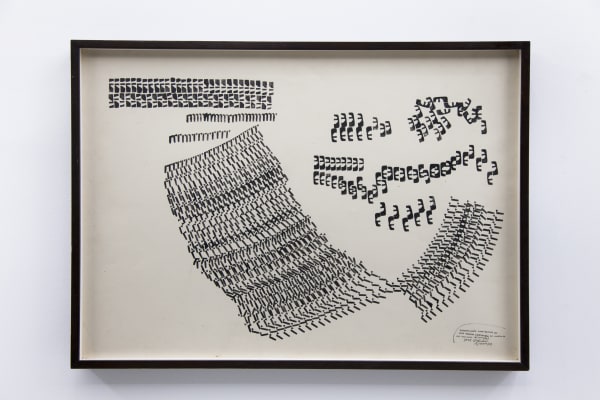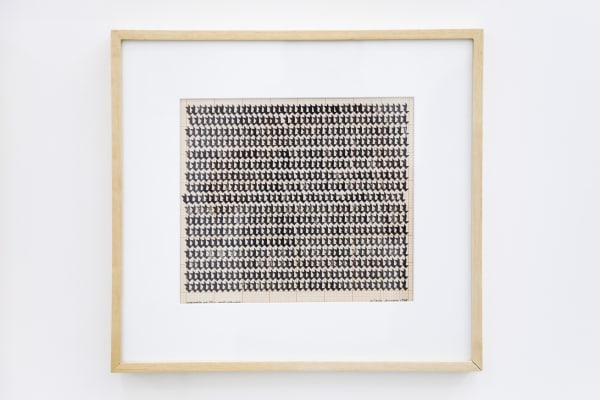José Cláudio: Stamps
"Stamps" is a series of drawings by José Cláudio dating from 1968 – 1972 that turned the artist - originally from the state of Pernambuco, Brazil – into one of the key personalities of the so-called Poem/Process Movement, along with Wlademir Dias Pino, Moacy Cirne, and Neide de Sá. As the title of the exhibition suggests, the drawings result from a repetitive gesture performed by the artist: paper stamping. It creates a mirroring effect achieved by pressing one or several stamps under the medium. The artist's solo exhibition is a collaboration with Galeria Base from São Paulo, and has a set of 23 works.
José Cláudio is a multifaceted artist, and his output does him justice. Born in 1932 in Ipojuca, Pernambuco, the designer, painter, engraver, and writer interrupted his studies at the Recife Law School when he joined the group known as Atelier Coletivo (Collective Atelier) in 1952. Since then, he began devoting himself exclusively to art. The works on display at Galeria Athena are a cutout of a particular artistic moment in his career that is seldom seen in Rio de Janeiro.
His relationship with stamps dates back to his childhood, when José Cláudio carved stamps on school rubbers to customize his books. In the artist’s own words:
"(...) in the Northeast Development Superintendence (Sudene), for either the Jaguaribe Valley Study Group, the Jaguaribe being a river in Ceará, or the Morada Nova Project (Morada Nova is a city in Ceará), we needed to urgently devise a series of plantation designs detailing plant by plant and how they were aligned, as this would later be show to the Ambassador of Israel. We did not have anything like the Letraset lettering system yet, which we just had to dry transfer to a surface. (...) I recalled my childhood memories in Ipojuca, when the boys carved their initials into erasers to stamp them on notebooks and everywhere else. We then soaked the erasers with pen ink and stamped them. (...) I suggested using that method on Sudene's design maps and so it was done. To cut out the erasers, I used the same scalpel we used to scrape India ink drawings on parchment paper - a Graphus pen. We would pour some India ink on top of a flat glass or something alike, wet the rubber stamp and stamp it on the right place. After the project, the stamps remained there without any use and so as for them not to be discarded, I brought them home".[1]
Despite easily connecting stamp drawings with experiments that had revolutionized poetry and visual arts in Brazil since the late 1940s, the artist himself revealed in another statement that the stamps "just happened without any deliberate avant-garde or experimental idea in mind".[2] There is no figurative intention, it is rather a graphic creation made by layers that develop distinct densities and accumulations at each work. Even though the gesture is not that of a brush, it is present when the artist presses his hand on the organic, carved forms. Soaking the stamps directly with India ink provides the artist with flatter surfaces, moving away from the indented characteristic inherent to stamps and getting closer to the artist’s black drawings in India ink and dip pen.
The process of carving his own stamps allowed the artist to render the shape of the stamp "open" so as to modify it while creating his compositions. This ensured an aesthetic relationship of a semiotic character. In a letter dated 1968, Walter Zanini responds enthusiastically to José Cláudio’s experiments by pointing out that his stamps "(...) are actually the result of a research that appeared by chance, truth be said, but which is deep enough to reach unforeseen yet rich semiotics."
Years of personal experimentation are gathered in this exhibition in drawings that explore aspects as diverse as linguistic signs or graphic possibilities that go beyond letters, the alphabet, or words. Far from being just a mechanical or eminently conceptual act, the works focus on poetry, drawing, linguistics, the object-stamp and constitute a plethora of graphic possibilities and challenges. These works became a fundamental reference to the artists of the mail art and visual poetry movements of the 1970s in Brazil.
[1] “Quer mesmo saber?” (“Do you really want to know it?”) - Text by José Cláudio published in the ‘Pernambuco Experimental’ catalog, p. 197
[2] “Quer mesmo saber?” (“Do you really want to know it?”) - Text by José Cláudio published in the ‘Pernambuco Experimental’ catalog,, p. 200.



